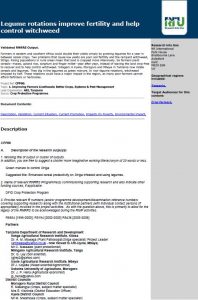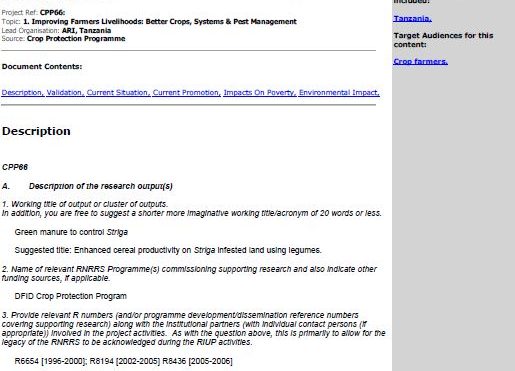Farmers in eastern and southern Africa could double their yields simply by growing legumes for a year in between cereal crops. Two problems that cause low yields are poor soil fertility and the rampant witchweed, Striga. Rising populations in rural areas mean that land is cropped more intensively. So farmers plant cereals – maize, upland rice, sorghum and finger millet – year after year, instead of leaving the land crop-free to recover and to help control witchweed. Villagers in Kyela, Morogoro and Mbeya in Tanzania now rotate cereals and legumes. They dig in the legumes as green manure. In rice–legume rotations, witchweed dropped by half. These rotations could have a major impact in the region, as many poor farmers cannot afford fertilisers or herbicides.
Region: Tanzania
Date published:
2007
Published by:
Research Into Use
Type of resource:
Research output overview
Resource topic:
Crop production
Project/Programme: Not specific
Pest/Disease: Witchweed
Pages:
7
File type:
PDF (706 KB)



